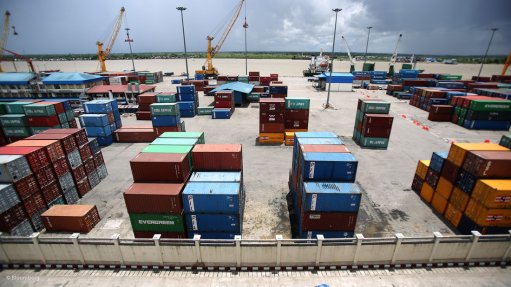
Photo by: Bloomberg
While South Africa has seemingly made the most use of the duty-free trade benefits with the US under the African Growth and Opportunity Act (Agoa) since inception, the nonreciprocal deal was, for the most part, heavily underused across the continent.
While the 15-year-old Act had surged into the spotlight owing to the months-long public impasse between South Africa and the US over the three-meats trade, it covered more than 1 800 tariff lines – the bulk of which were not comprehensively used across Africa.
Speaking during a Mandela Institute-hosted discussion on Agoa, in Johannesburg on Tuesday, Department of Trade and Industry international trade and economic development division deputy director-general Xolelwa Mlumbi-Peter explained that member African countries, including South Africa, had struggled to fully leverage the benefits under the Act, with a current utilisation rate under 20% across the continent.
Despite major gains in exports and investments emerging from the US-led Act, South Africa continued to export mostly primary products – a trend the country was trying to change – and its lack of diversity had limited the benefit the country could have gained from the Act.
In South Africa, only 141 of the 1 800-odd tariffs were being used, with Agoa-related exports accounting for some 38% of all trade with the US.
However, South Africa was not the only African country that had failed to fully leverage the nonreciprocal agreement, with many other Agoa beneficiaries also hit by fundamental structural constraints, including supply chain and infrastructure challenges, inadequate productive capacity and an inability to meet the stringent US regulations, especially on sanitary and phytosanitary (SPS) issues.
Further, it was more than beneficial tariffs, as some export interests were not included under the trade programme, Mlumbi-Peter added.
Across sub-Saharan Africa, only some 17% of the tariffs introduced were currently being used and only a fraction, 14%, of the tariffs under the World Trade Organisation's Generalized System of Preferences programme were being used, despite all attempts to take advantage.
Despite the setbacks, however, South Africa had benefited largely from the unilateral law, with some 62 000 jobs created under the programme, while it contributed to the country’s industrial ambitions.
She pointed out that over 600 US companies were also now based in South Africa.
US Embassy trade and investment officer Edward Winant explained that South Africa had been one of the few countries able to diversify its product range outside of petroleum, leveraging Agoa through, most notably, the automotive and agricultural sectors to grow its exports.
He attributed around R24-billion of South Africa’s R104-billion, or $7.4-billion, in exports to the US in 2015 to the Agoa trade. Exports under the Generalized System of Preferences accounted for 15.3%.
The automotive industry was by far the largest beneficiary, it was noted.
Considering that exports under Agoa were only a portion of South Africa’s overall export trade, XA International Trade Advisors director Dr Donald Mackay stressed that there was a need to separate the exports to the US with the exports to the US under Agoa.
He noted that, while the country boasted a "counter cyclical" harvest, SPS issues and other complex challenges severely hampered agricultural exports, and holding many tariff benefits aimed at agriculture did not “make it easier” to export product.
“We need to look at where South Africa has an export advantage,” he said.
In addition to a lack of awareness for general industry over the opportunities Agoa presented, South Africa faced significant competition as China invested in Africa to gain access to the US.